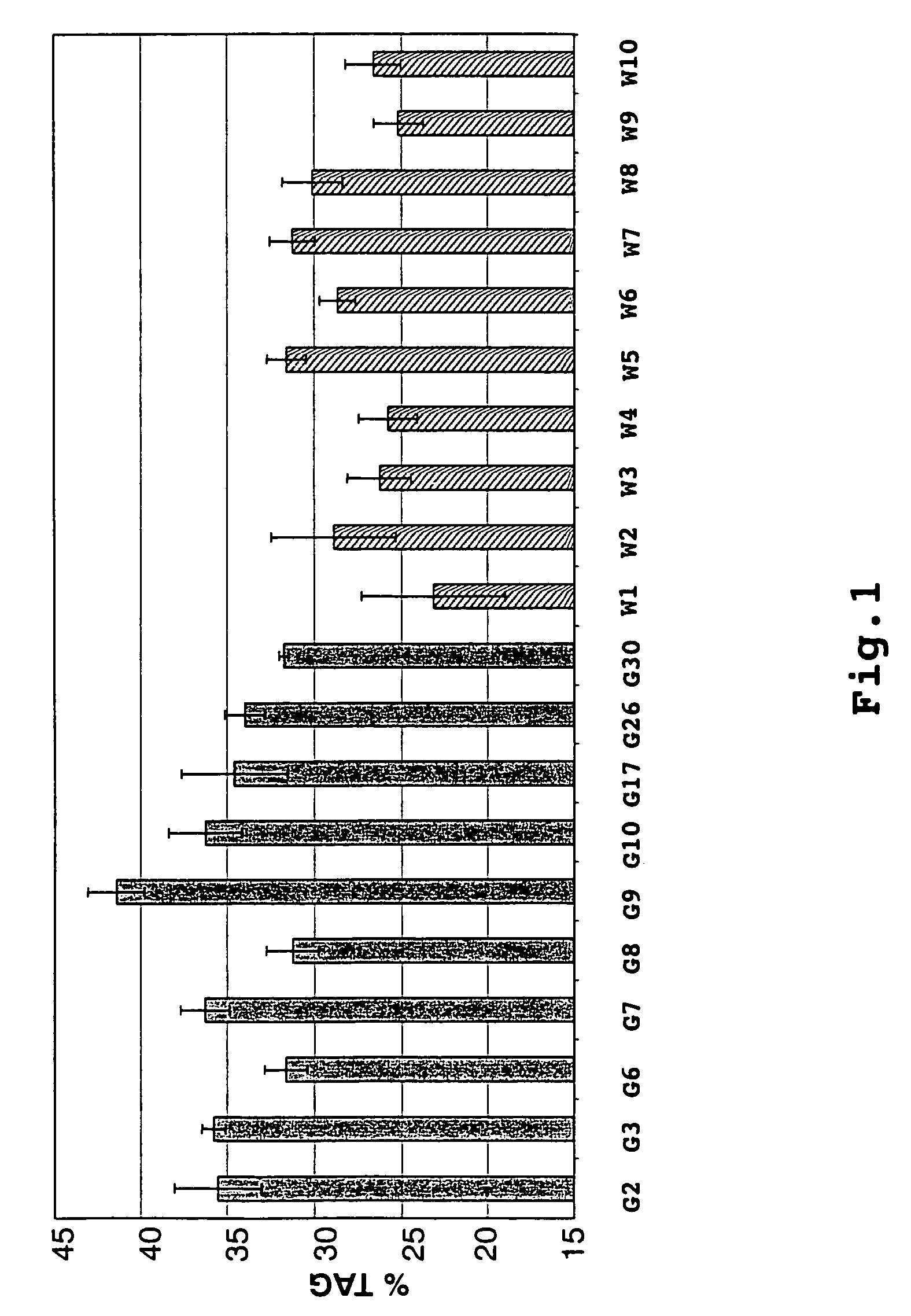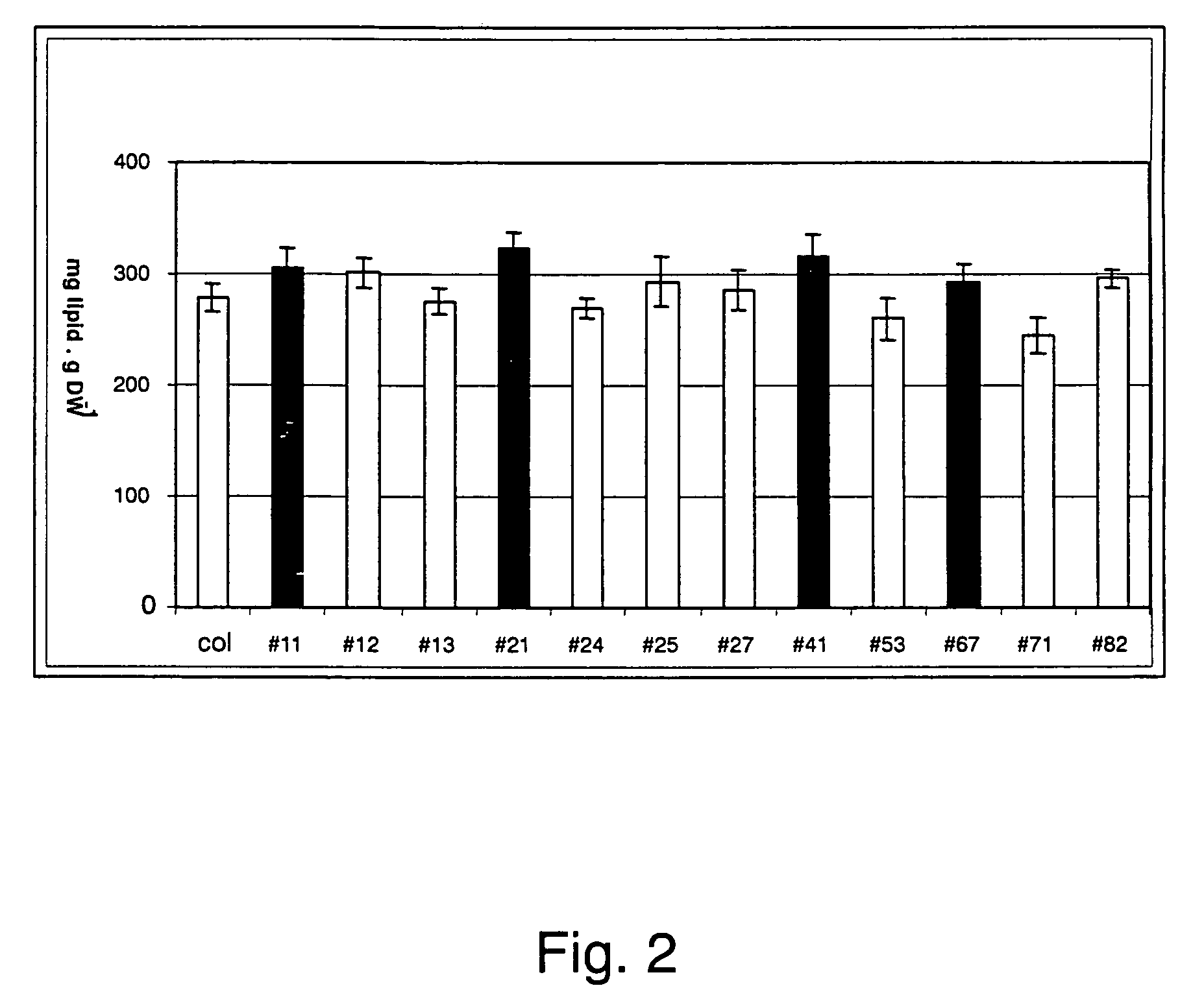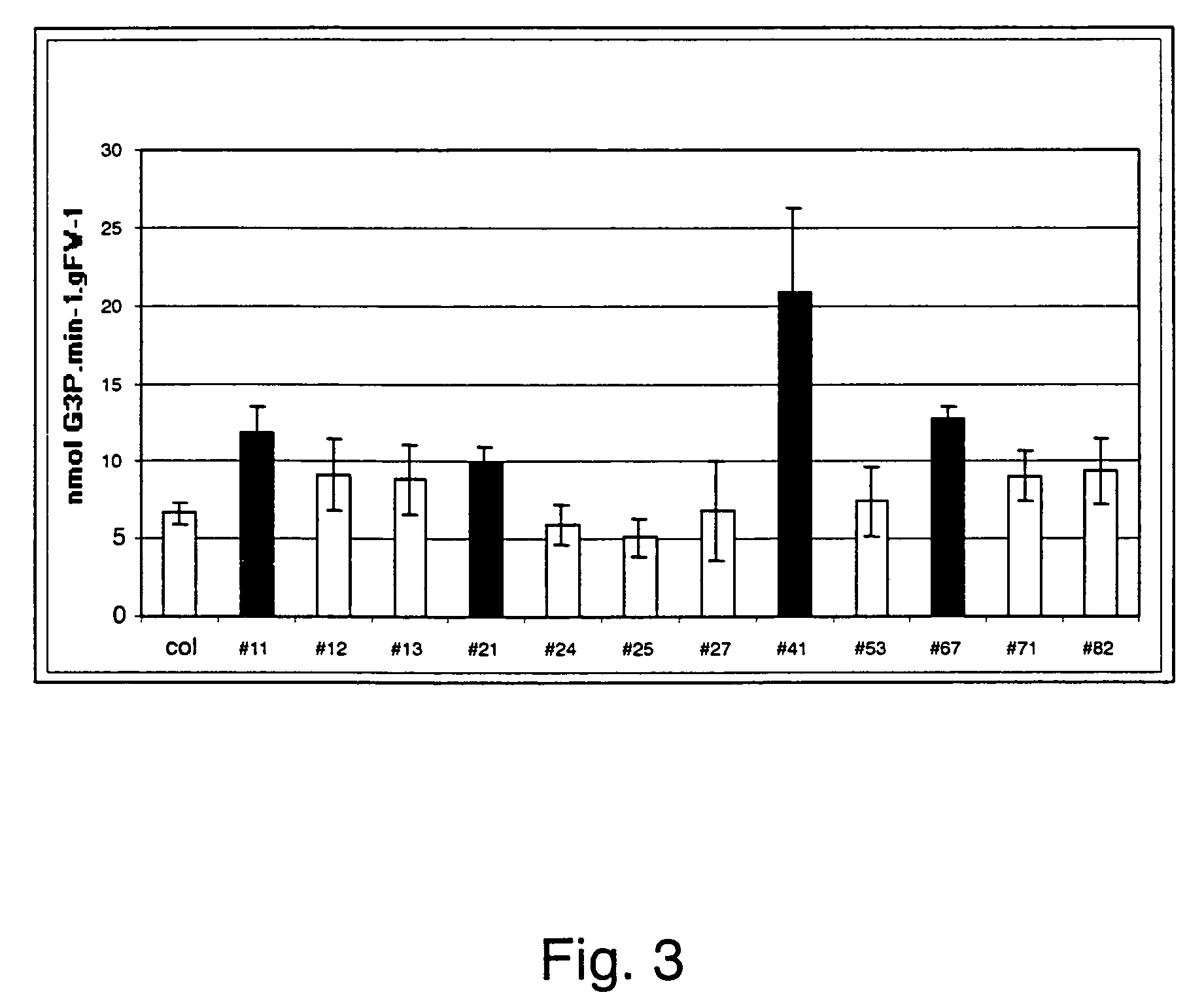Methods for increasing oil content in plants
- Summary
- Abstract
- Description
- Claims
- Application Information
AI Technical Summary
Benefits of technology
Problems solved by technology
Method used
Image
Examples
example 1
General Methods
[0204]The plant Arabidopsis thaliana belongs to the higher plants (flowering plants). This plant is closely related to other plant species from-the Cruciferae family such as, for example, Brassica napus, but also to other families of dicotyledonous plants. Owing to the high degree of homology of its DNA sequences or its polypeptide sequences, Arabidopsis thaliana can be employed as model plant for other plant species.[0205]a) Culture of Arabidopsis plants[0206]The plants are grown either on Murashige-Skoog medium supplemented with 0.5% sucrose (Ogas et al. (1997) Science 277:91-94) or in soil (Focks & Benning (1998) Plant Physiol 118:91-101). To achieve uniform germination and flowering times, the seeds are first placed on medium or scattered on the soil and then stratified for two days at 4° C. After flowering, the pods are labeled. According to the labels, pods aged 6 to 20 days post-anthesis are then harvested.
example 2
[0207]Genomic DNA from Saccharomyces cerevisiae strain S288C (Mat alpha. SUC2 mal mel gal2 CUP1 flo1 flo8-1; Invitrogen, Karlsruhe, Germany) was isolated following the protocol described hereinbelow:
[0208]A 100 ml culture was grown at 30° C. to an optical density of 1.0. 60 ml of the culture were spun down for 3 minutes at 3000×g. The pellet was resuspended in 6 ml of twice-distilled H2O and the suspension was divided between 1.5 ml containers and spun down, and the supernatant was discarded. The pellets were resuspended in 200 μl of solution A, 200 μl phenol / chloroform (1:1) and 0.3 g of glass beads by vortexing and then lysed. After addition of 200 μl of TE buffer, pH 8.0, the lysates were spun for 5 minutes. The supernatant was subjected to ethanol precipitation with 1 ml of ethanol. After the precipitation, the resulting pellet was dissolved in 400 μl of TE buffer pH 8.0+30 μg / ml RNase A. Following incubation for 5 minutes at 37° C., 18 μl 3 M sodium a...
example 3
Plasmids for the Transformation of Plants
[0240]Binary vectors such as pBinAR can be used for the transformation of plants (Höfgen und Willmitzer (1990) Plant Science 66: 221-230). The binary vectors can be constructed by ligating the cDNA into T-DNA in sense and antisense orientation. 5′ of the cDNA, a plant promoter activates the transcription of the cDNA. A polyadenylation sequence is located 3′ of the cDNA.
[0241]Tissue-specific expression can be achieved using a tissue-specific promoter. For example, seed-specific expression can be achieved by cloning in the napin or the LeB4- or the USP promoter 5′ of the cDNA. Any other seed-specific promoter element can also be used. The CaMV 35S promoter can be used for constitutive expression in the whole plant.
[0242]A further example of binary vectors is the vector pSUN-USP and pGPTV-napin, into which the fragment of Example 2 was cloned. The vector pSUN-USP contains the USP promoter and the OCS terminator. The vector pGPTV-napin contains a...
PUM
| Property | Measurement | Unit |
|---|---|---|
| Fraction | aaaaa | aaaaa |
| Fraction | aaaaa | aaaaa |
| Fraction | aaaaa | aaaaa |
Abstract
Description
Claims
Application Information
 Login to View More
Login to View More - R&D
- Intellectual Property
- Life Sciences
- Materials
- Tech Scout
- Unparalleled Data Quality
- Higher Quality Content
- 60% Fewer Hallucinations
Browse by: Latest US Patents, China's latest patents, Technical Efficacy Thesaurus, Application Domain, Technology Topic, Popular Technical Reports.
© 2025 PatSnap. All rights reserved.Legal|Privacy policy|Modern Slavery Act Transparency Statement|Sitemap|About US| Contact US: help@patsnap.com



